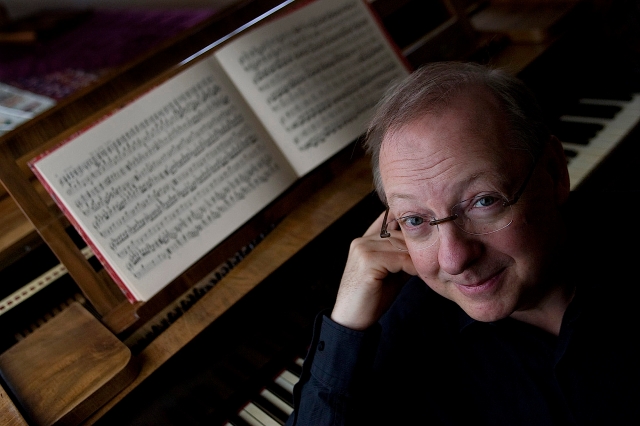Cleveland Orchestra
Nicholas McGegan, condcutor
Michael Sachs, trumpet
Severance Hall
Cleveland, OH
November 21, 2019
Schubert: Selections from Rosamunde, D797: Overture – Ballet Music No. 1 – Entr’acte No. 3 – Ballet Music No. 2
Hummel: Trumpet Concerto in E major
Haydn: Symphony No. 104 in D major, Hob. I:104, London
This marked the third consecutive November Nicholas McGegan has stood at The Cleveland Orchestra podium, and his charm and affable spirit without fail warms an otherwise chilly time of the year. The present program straddled the eighteenth and nineteenth centuries, with Hummel’s Trumpet Concerto the centerpiece, bringing into the spotlight Cleveland principal Michael Sachs. Proceeding in reverse chronological order, McGegan opened with selections from Schubert’s incidental music to Rosamunde.

What is known as the overture to Rosamunde was in fact the repurposed overture to Schubert’s earlier (and unsuccessful) opera Der Zauberharfe. A bold sense of drama opened, but the remainder of the work bubbled with a graceful Schubertian charm. The first of the ballets was of a symphonic weight in its Sturm und Drang sensibility, but more mellow material offered contrast near the end, heightened by the clarinet of Afendi Yusuf. One of Schubert’s most cherished melodies, later reused in one of the impromptus for piano as well as the thirteenth string quartet, resounded through a choir of strings and winds in the Entr’acte. Another ballet rounded off McGegan’s suite, given with a rustic abandon.
Hummel’s Trumpet Concerto remained a forgotten quantity until it was rediscovered in the 1950s by trumpeter Armando Ghitalla. Originally cast in the key of E major, Ghitalla opted to publish the work transposed to E flat for ease of playability on the modern trumpet. It continues to be most often heard in the lower tonality today, including in Sachs’ two previous performances of the work with this orchestra. This time, however, Sachs stayed faithful to the composer’s intentions, easily surmounting the inherent technical hurdles. The martial opening was bright and brilliant with the soloist offering a limpid flexibility and climactic trills. The long-breathed tones of the central Andante, interjected by further trilling gestures, were pitted over an undulating accompaniment – a lyrical essay to be sure, but not without a certain grandeur. A jaunty rondo served as the finale, showcasing Sachs’ rapid-fire virtuosity and a never-waning vigor from both soloist and orchestra.
Haydn’s final entry of his long series of symphonies concluded the evening. The attention-grabbing opening made a sharp turn to the doleful minor before this introductory material gave way to the delectably appealing material firmly in the home key of D major. Here and throughout, McGegan drew out a playing in equal parts refined and joyous. The slow movement was a gentle affair, deftly balanced and crisply articulated. A rhythmic vitality served the minuet well, with Jeffrey Rathbun’s oboe of note in the trio. Energy was never at the expense of clarity in the effusive finale, the main subject of which was rooted in a Croatian folk song.
